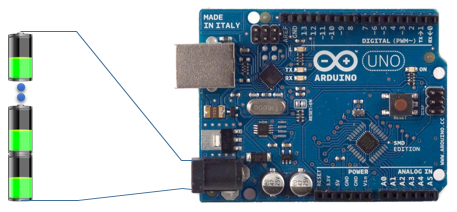Arduino Home : www.sharetechnote.com
Electrical Specification : Arduino Uno R3
Whenever you connect any devices to Arduino board, I would suggest you to refer to this page and check whether you can directly connect those devices (e.g, sensor, LEDs or motors etc) or you need to add any external circuits to supply power (voltage, currents) or any additional protection circuit.
Electrical Specfication (Requirement) for Signal and Voltage Pins
I know you are eager to connect something to the pins (input / output pins) on the board and make something work. But before you connect anything to the pins, it is highly recommended to know the basic electrical specification of each pins. The most important specification will be input and output specification of each pins. With understanding of these specification, you can find answers to following questions
- Can I connect my LED directly to the pins ? or do I need to build additional protection circuit ?
- Can I connect my motor directly to the pins ? or do I need to build additional power supply circuit ?

Arduino Power Supply Voltage
You may not need to know when you are writing the program and developing a circuit with your board connected to a PC because PC USB would provide proper power (voltage and current) to the board. But eventually you will run the board without using the board after the development (You would not want to chase the toy car holding your laptop connected to the Arduino board installed on the toy :). Then, you should use external battery pack to operate the board. It means you need to know about the required power (current and voltage) to operate the board. Simply put, you need to know how many batter do I have to connect to run the board.

Followings are what my son found from internet. (you may try to find the same/additional information on your own). The first thing you need to learn as an engineer (or future engineer) is to learn how to find the information that you need .
- Operating Voltage : 5 V
- Recommended input voltage : 7-12V
- Absolute input voltage limit: 6 - 20V
- if input voltage is less than 7 V, it may cause instability to the board and give inaccurate analog readings.
- if input voltage is greater than 12V, it is likely to overheat